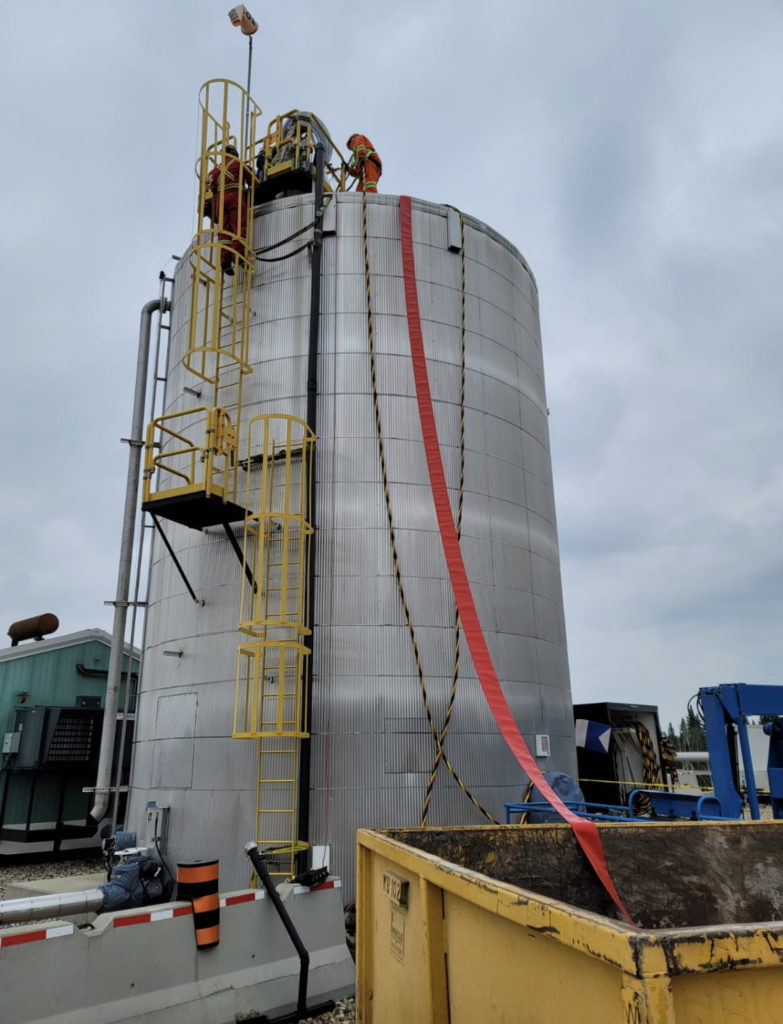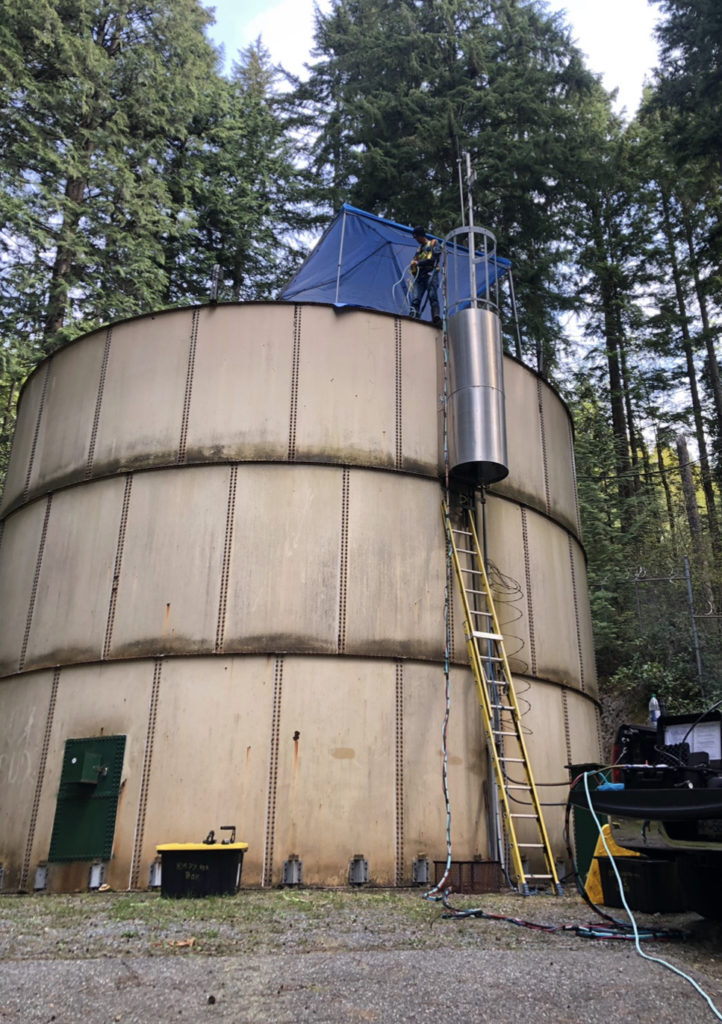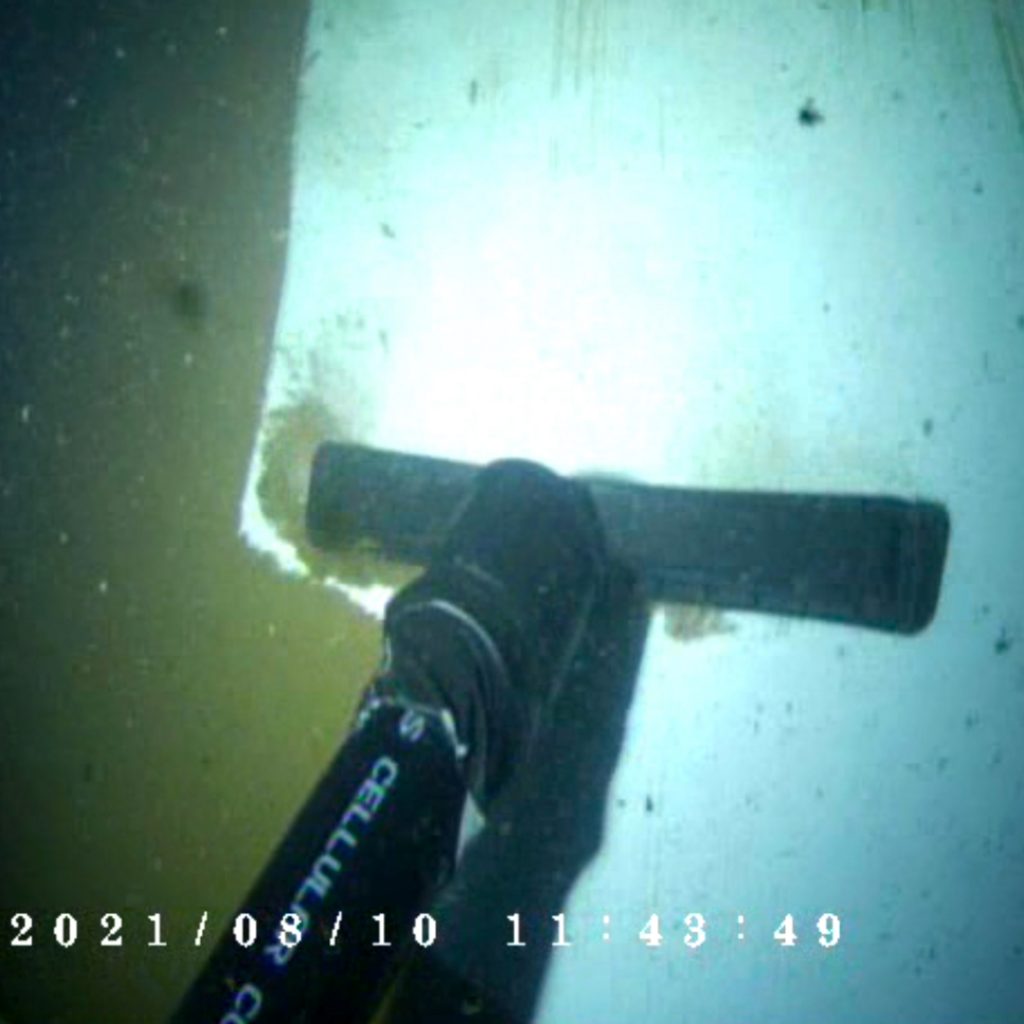There are numerous various techniques of water storage, depending on the intended end use, such as drinking supply, irrigation, agriculture, industrial, fire prevention, etc. Each water storage tank is susceptible to worries about contamination and deterioration over time, regardless of these various designs. To counter this, careful inspection and cleaning procedures carried out by trained personnel, certified divers, or robotic tank cleaners can reduce silt buildup, tank corrosion, and assist in determining when repair is necessary.
Since water is essential for life on Earth, humans have had a long history of storing it, with the earliest indications of water storage tanks appearing as early as 3000 BC. These primitive tanks, which were initially made of sand, wood, or stone and were mainly used for drinking water or cultivation, were prone to pollution (source). Modern times have brought up far greater and more complex demands for clean water.
WHAT CAUSES WATER TANK CONTAMINATION?
Sediment Buildup
Small levels of mineral sediment in water tanks are common and can be safe, however if left untreated, ‘sludge’ buildup can result in issues. If allowed to settle inside a tank for extended periods, sludge can wear away interior linings and induce corrosion or rusting on steel tanks. Additionally, sedimentation can attract pathogenic micro-organisms which can compromise water safety.
Still Water
Stagnant or motionless water can result in the production of biofilm, which is an ideal host for insects, and crustaceans, or dangerous waterborne pathogens. To combat this, water tanks should implement a mixing system. These systems work to circulate different layers of the stored water to avoid stratification of surface and bottom water.
Vandalization
Whether by humans, animals, or acts of nature, physical damage can pose significant risk to water security. Damaged vents or screens can allow for the entrance of aquatic organisms into the water system.

WHY IS IT IMPORTANT TO CLEAN WATER STORAGE TANKS?
According to the CDC, water borne pathogens put over 100,000 U.S. residents in the hospital every year, and directly cause over $3 billion in direct healthcare costs. These illnesses are not limited to drinking water either. E. Coli outbreaks are regularly linked to contaminated irrigation water, and illness is possible whenever someone swallows, has contact with, or breathes in mists from contaminated water during any household or industrial use.
If a community’s major supply of water comes from a water storage tank, it becomes absolutely integral that the structure is in reliable condition. Any sanitary issues can result in widespread infection risk or water shortages due to tank downtime. Water Storage Tank Cleaning
WHAT IS THE PROCESS FOR CLEANING WATER STORAGE TANKS ?
Due to the variety of water storage tank designs and styles, there may not be just one standard for cleaning routines. In Ontario, Canada, municipalities and organizations are bound to the Safe Drinking Water Act, 2002, which lays out a standard of care.
At any reasonable time, an officer can conduct an inspection to ensure that stored water is abiding by safety standards. As a general rule, it is recommended that water tanks should be inspected and cleaned at a minimum of once every six months for drinking water and once a year for non-potable water.

Option 1: Drain the Tank
The most traditional approach to cleaning a water storage tank is to completely drain and have certified workers enter and manually clean the tank. Whenever a human enters a water tank, contamination is a concern. To combat this, proper sanitary PPE must be worn, and all tools must be disinfected. The entire process can be summarized in five steps.
- Empty The Tank for Entry To allow for workers to enter and begin cleaning the tank, it must first be completely emptied of its water contents. Ensure that the water is drained into the ground away from plants for safe, legal disposal. All workers must be certified for working in enclosed spaces.
- Clean & Rinse Once emptied, workers can vacuum out any sediment, scrub the interior with a detergent, and pressure-wash rinse the interior until all traces of detergent are gone.
- Disinfect Depending on the size of the tank, a calculated ratio of water and chlorine-bleach should be added and allowed to sit for a minimum of 4 hours to disinfect the tank.
- Drain & Refill Once disinfected, workers can drain the tank again of the chlorine-bleach solution and refill with clean water.
- Test & Repeat if Necessary To ensure that chemical levels are safe for human use after cleaning, workers should test water samples and repeat the drain and refill process if necessary.
This method can be extremely labor intensive and costly. While conducting a dry inspection and cleanout, the water tank must be completely taken out of service. This means that alternative water supply must be implemented to prevent shortages and can be logistically or economically challenging. This method also puts workers in potential danger working in confined spaces while handling chemicals. Additionally, cross contamination is always a concern whenever humans enter the tank, even if all precautions are taken.
Talk to us about how our ROVs improve the safety, cost and speed of water tank inspections and cleanings CONTACT INDUSTRY SPECIALIST

Option 2: Water Tank Cleaning Divers
As an alternative to dry cleanings, commercial divers can be hired to clean water tank interiors without any dewatering. Typically done in a team of three, one diver will enter the water while two remain topside as ‘spotters’. Before entering, the diver’s wetsuit will be completely disinfected. Once inside, they will use a vacuum system to pump sediment to the surface for removal, and report on the condition of the tank structure.
The most notable benefit of this over dry cleaning is the ability to maintain water in the tank. Dewatering can waste thousands of gallons of water and can sideline water supplies for multiple days. However, some negative considerations of divers are the cost, risk, and time consumption.
Due to the complexity of performing submerged tasks, commercial divers undergo rigorous certification, which reflects in high hourly cost. Additionally, the associated dangers of diving in confined spaces with single exits puts divers at risk and can increase the risk premiums. Divers are also limited to their gas supply, meaning frequent resurfacing which can extend cleaning times. While proper sanitation should always be performed pre-entry, having divers directly enter the water does carry the risk of cross contamination as well.
Option 3: Robotic Tank Cleaning With ROVs
Implementing a Remote Operated Vehicle (ROV) is another option for tank inspections and cleanings without draining the tank. These vehicles come standard with HD cameras, and can be equipped with multi-intake vacuum heads and pressure washers to complete a tank cleaning fully remotely.
The disinfection process is much simpler for an ROV in comparison to humans, and can be done by simply soaking or spraying the vehicle with a solution. Thanks to extended battery lifes, cleanings can be completed quickly with zero or minimal breaks. Since the operator can remain topside, there is no risk associated with diving or entering confined spaces, and all imperfections can be easily recorded and used for asset monitoring.
Keep Water Tanks Online
The main benefit of Deep Trekker ROVs in lieu of a dry cleaning is to keep water tanks online. With water conservation becoming a growing concern, throwing away thousands of gallons of usable water is far from the ideal solution.
Reduce the Use of Divers
While there will always be a place for commercial divers for certain projects, ROVs can effectively streamline tank cleanings in lieu of divers, thus lowering costs, improving efficiency, and maximizing safety.
By using the ROV in lieu of a human diver, The Tank Inspectors not only keep humans safe but save time and money. In addition to OH&S standards regarding people in tanks and limiting the time people can actually be in the tanks, Dan noted that with the ROV “there’s a lot less set up time, divers require a lot of set up.” Furthermore, the divers require scheduling and coordinating where the DT640 can be deployed quickly and conveniently.
In addition, the use of the DT640 saves the Tank Inspector team significant amounts of money, estimating that the ROV is “40% of the cost of using divers.” “In fact,” Jo continued, “many diving companies themselves use the ROV to limit dive time by scoping out jobs with the DTG3 and undertaking cleans with the DT640.”
Easy To Disinfect
One of the major risks associated with sending divers into tanks is the chance of contamination from their equipment if they do not follow a strict procedure. There are a lot of “nooks and crannies” on a dive suit that can hold bacteria and other potentially harmful materials to the potable water.
For a Deep Trekker vehicle, disinfection is simple and reliable, thanks to their compact and intuitive design. To disinfect, simply spread the vehicle and tether on a clean and disinfected ground sheet. Then, thoroughly spray down materials with a chlorine-bleach disinfection solution. Alternatively, the vehicle and tether can also be soaked in the solution. Note that all plastic ropes and cables, used to hoist a vehicle for example, must be treated in the same manner.
Portable
Deep Trekker’s vehicles operate using lithium ion batteries instead of direct power from generators. The absence of topside power drastically reduces the overall footprint of the setup, allowing for the vehicles to transport in either one or two Rugged Pelican Cases. At 34lbs base weight, the DT640 VAC can be effectively hoisted to the top of water towers by a single operator.
The handheld controller and tether system are also designed with portability in mind. Replacing large control consoles and bulky tether is essential for maneuverability. The included tether utilizes a polyurethane outer jacket with embedded synthetic fibers to achieve a 200lbs working strength at under ¼ inch diameter to fit on a compact reel system. The combination of controller, tether, and battery powered vehicle simplifies working at heights and provides superior portability between jobs.
